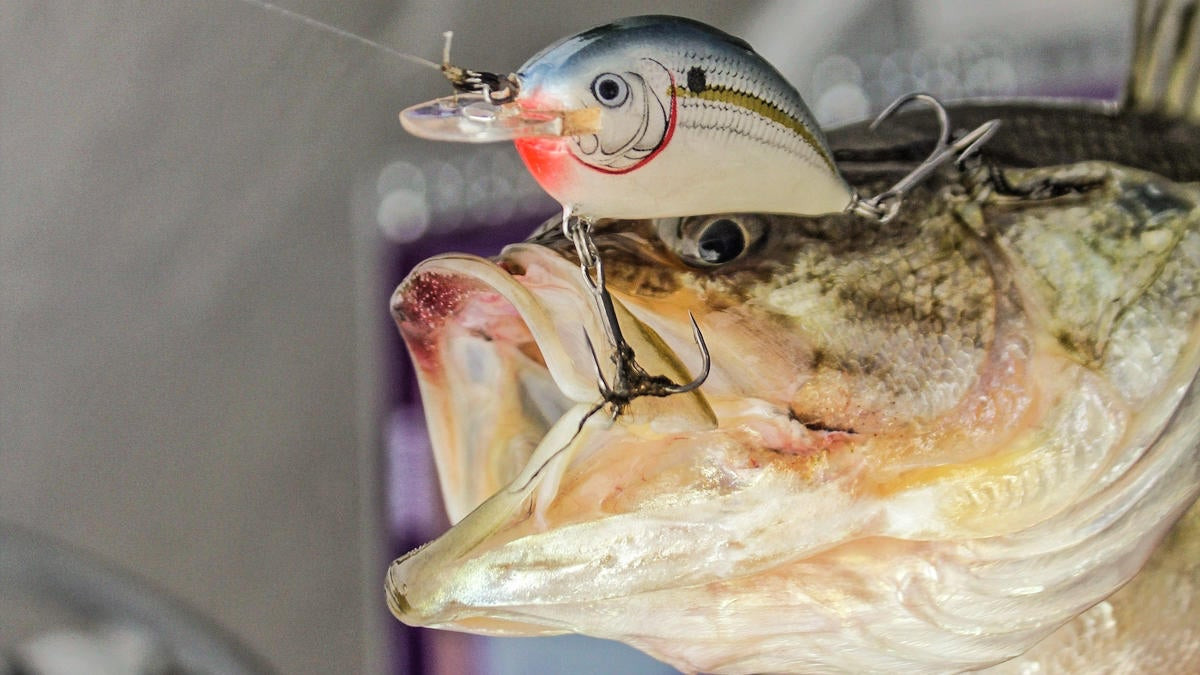As anglers, we each have a handful of bass fishing baits to which we turn when the fishing gets really tough. Maybe a half-dozen lures that we know we can count on to draw a strike. Whether it’s a tough summer bite and you grab for a drop shot or a post-frontal prespawn deal and you commit to the punching rod knowing that’s the only bait you have any confidence in getting bit.
We’ve all been there. We all have those special “confidence baits”.
For professional angler Scott Canterbury, one of those confidence baits throughout the year and especially in the winter is the Bagley Balsa Sunny B. The Sunny B comes in two sizes; a shallow diver that runs 3 to 4 feet and a medium diver that runs 6 to 7 feet. These baits have very similar action and are interchangeable for Canterbury based solely on depth. The main thing is that he can count on these when he needs a bite.
Canterbury found himself in a similar situation this past season while fishing the Bassmaster Elite Series event on Lake Chickamauga.
“I actually made the cut on that bait,” Canterbury said. “I caught all my fish the first day on a frog but the second day I only had one fish around midday and I ran down and caught everything I weighed in on the shallow-diving Sunny B around schooling fish that I couldn’t get to bite anything else.”
A version of this bait is one Canterbury keeps handy year round, but let’s look now at how he uses them in particular from the winter months into the prespawn.
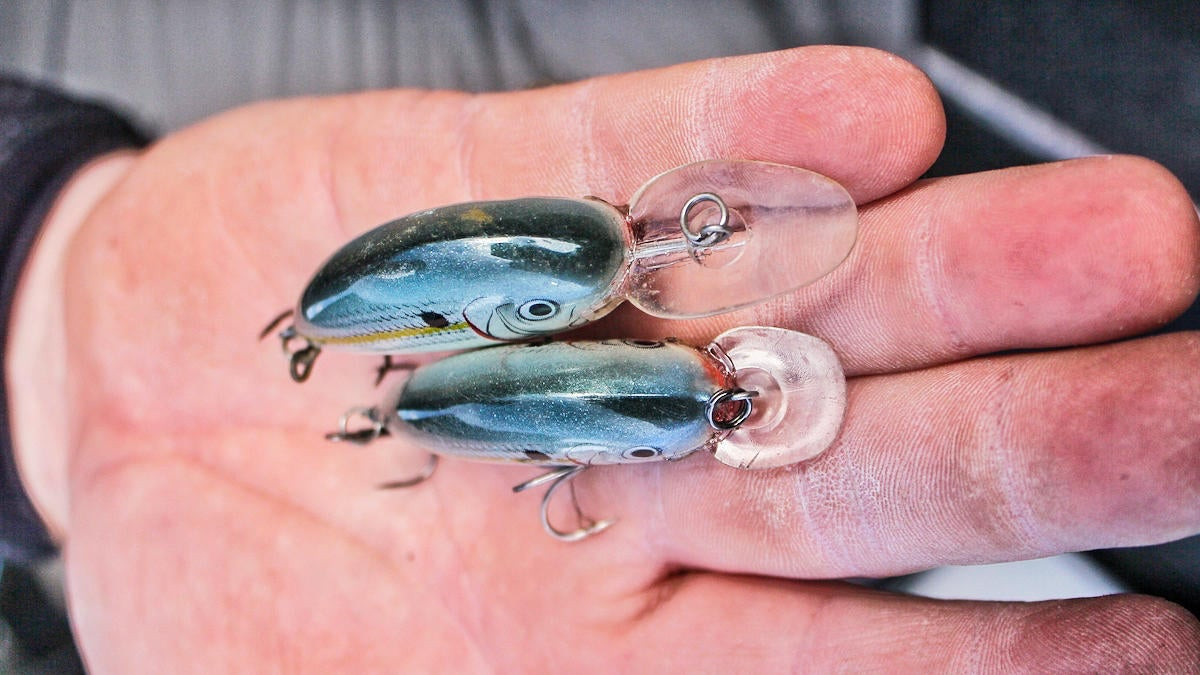
When you need this bait the most
When the water gets down below 52 degrees and the bite gets really tough, that’s when small crankbaits like the Bagley Balsa Sunny B really shine. Baits with subtle, lifelike action that don’t give off a lot of vibration are used to match the hatch.
“Something like a No. 5 Shad Rap,” Canterbury said. “The medium-diving Sunny B is what I use in place of that. It just casts better in my opinion. But I’d put it in that category of baits that are really crucial to have given those conditions. And I mainly just throw it in clear water. A light stain is ok, but I just don’t throw it much in muddy water.”
The reason being according to Canterbury, as the cold water gets muddier fish tend to push shallower and shallower. That’s when he will move away from the Sunny B and towards the shallower diving Sunny B Squarebill or a different squarebill, spinnerbait or other bait to target the shallower fish.
“Wind always helps too, just like with any reaction bait,” Canterbury said. “Especially when the water is really clear. But you can catch them on it even without wind, especially if the water has a little stain to it.”
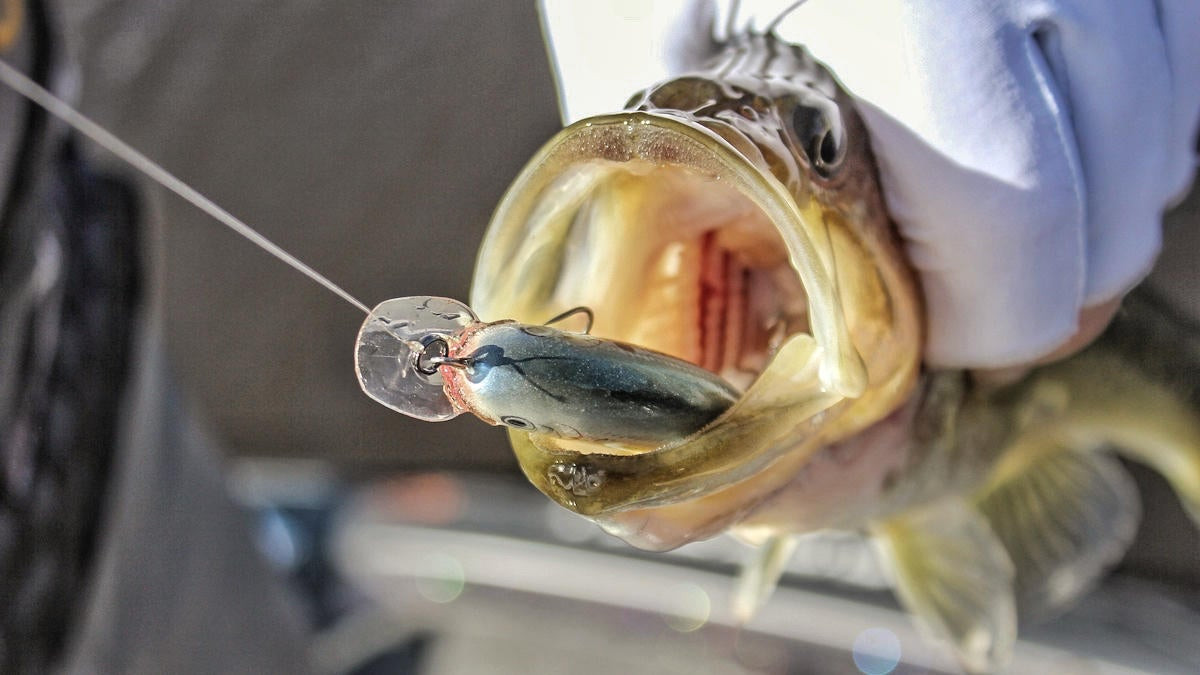
High-percentage targets
“In the wintertime, I focus mainly on rock, but if you can find wood that’s on rock, that’s a perfect mix,” Canterbury said.
Like many of us this time of year, Canterbury finds himself fishing lakes with winter pools. This means the lakes are drawn down in the winter in an effort to prevent flooding. That low water is what often leads to the scarcity of wood and an overabundance of rock as cover for bass. But when you do find that mix, those are some of your highest percentage places.
“As the water starts to warm just a bit, red clay banks get really good too,” Canterbury said. “I’ve caught a lot of fish along those type banks on the Coosa River.”
Vegetation can be rather scarce in the winter months as well. The colder water, heavier currents and shorter daylight hours all compound to beat the vegetation back. But when vegetation is present, it’s worth checking out.
“I caught a few on the shallow-diving Sunny B a couple weeks ago on Lay Lake just ticking it through the outside edge of the willow grass where it drops off to 3 to 5 feet,” Canterbury said.
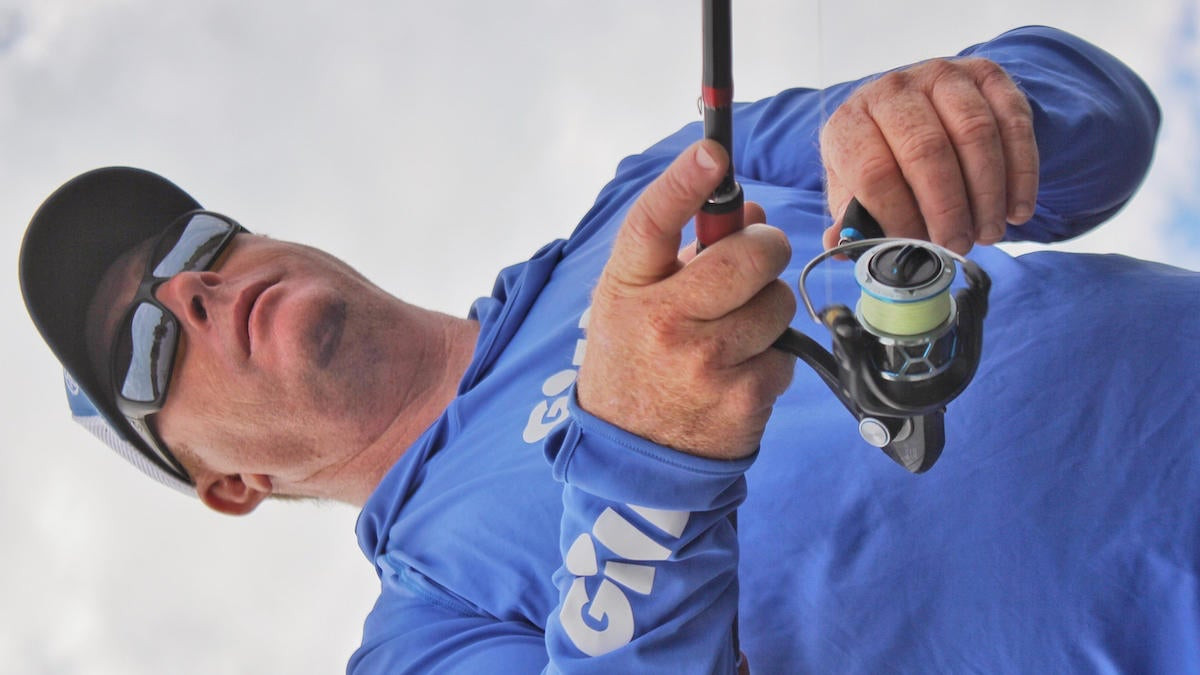
Gear considerations
Though you can throw the Sunny B on a baitcaster, you can certainly throw it farther with spinning gear. And you can use lighter line to get the bait deeper and you’re able to play the fish a little better with a spinning rod, which can be crucial in cold-water situations where the fish aren’t getting the bait particularly well. For Canterbury, the combo looks like this.
“I use an Ardent Bolt Spinning Reel with a 7-foot, 4-inch medium light Halo Fishing Twilight Series II spinning rod,” Canterbury said. “Typically I’ll go with a braid to fluorocarbon leader but if it’s really cold and the bite is finicky I like 6-pound monofilament.”
Canterbury explained that he goes with the monofilament then for a couple reasons. He likes the little bit of stretch that he gains with the mono and credits that characteristic with eliminating lost opportunities as fish tend to tear off with the more rigid braid. He also mentioned that the lightweight mono has a tendency to come off the spool better and develop fewer line twists in the colder water. When he does go with braid, he uses 10-pound P-Line TCB Yellow Braid and an 8-pound fluorocarbon leader.
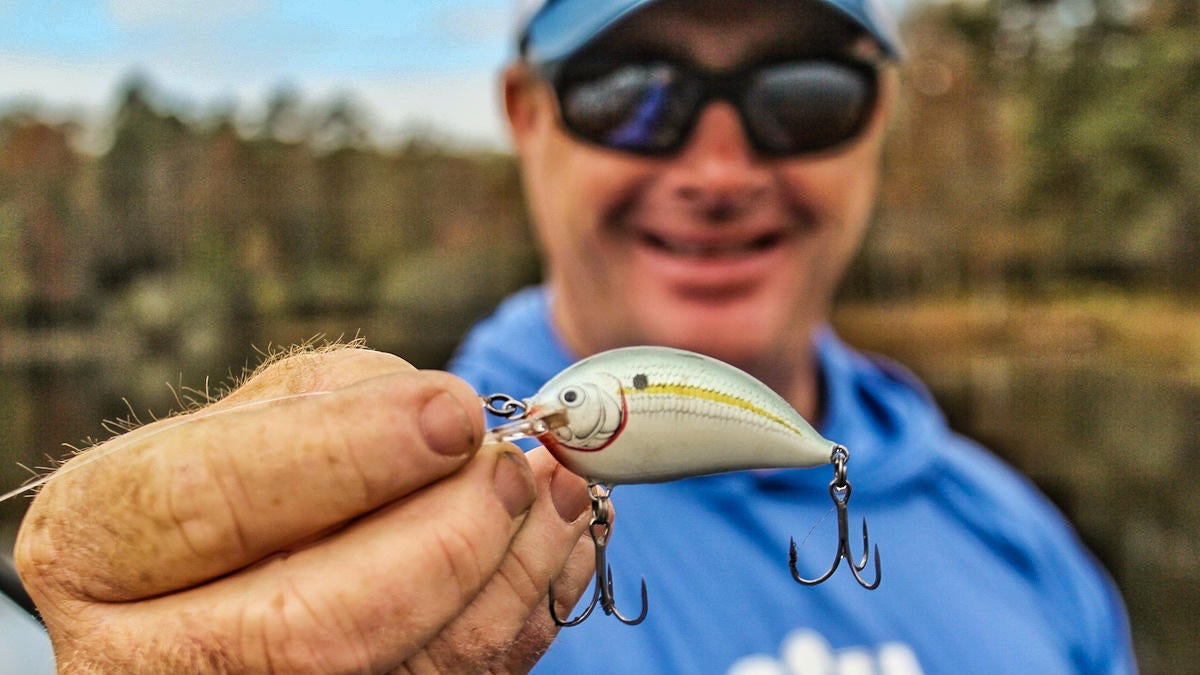
In conclusion
The Bagley Baits Balsa Sunny B is Canterbury’s go-to finesse crankbait. Throughout the year, if Canterbury needs a bait to closely mimic a small baitfish in a high-visibility situation, one of the two Sunny Bs is what he’s reaching for. But in the cold in particular, he’ll have both the shallow-and medium-diving Sunny B tied on and ready to deploy.
Looking for whatever cover he can find, Canterbury lets the Sunny B do what it does best. He doesn’t employ a lot of action and instead slowly cranks the bait down and lets the subtle, tight action of the bait do all the work. This is essential when targeting bass in cold water as the cold-blooded animals are in a rather docile state. Still, despite their attempt to sit still and conserve energy, little finesse crankbaits like the Sunny B are often the perfect bait to unlock those jaws.


